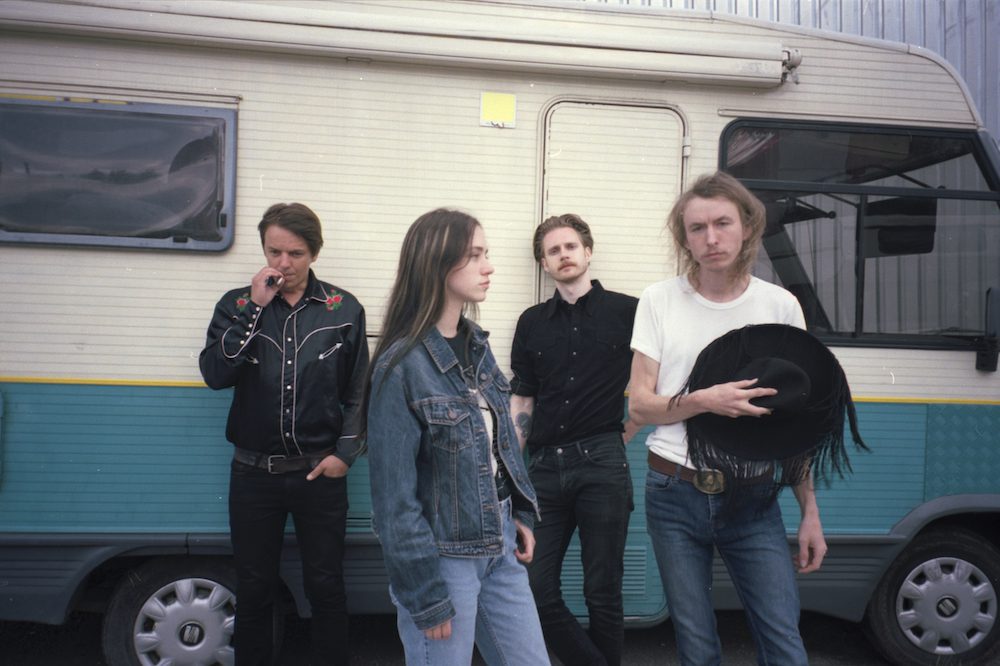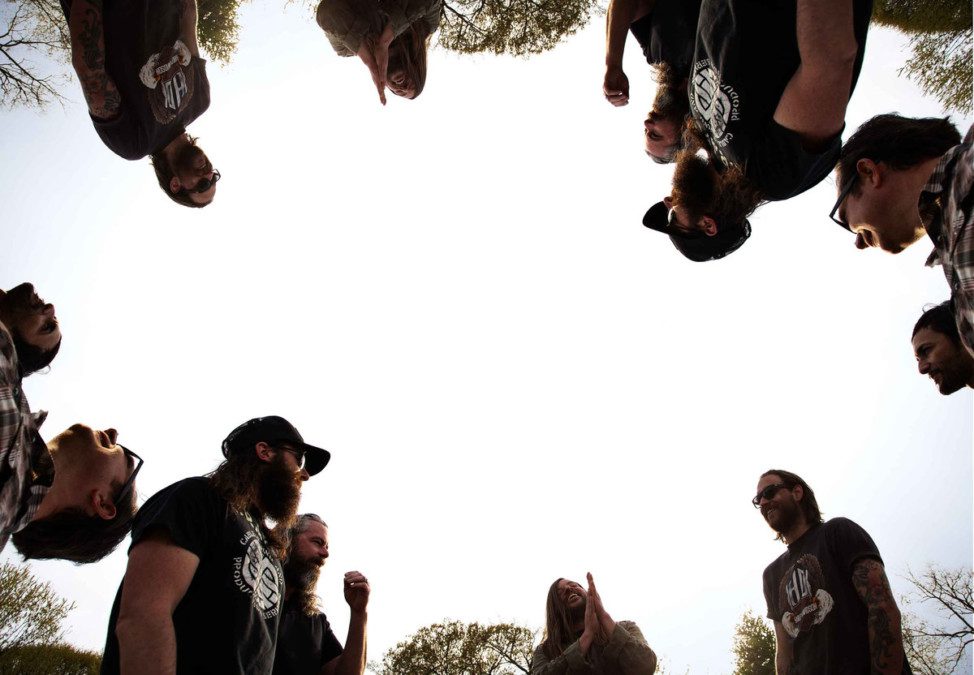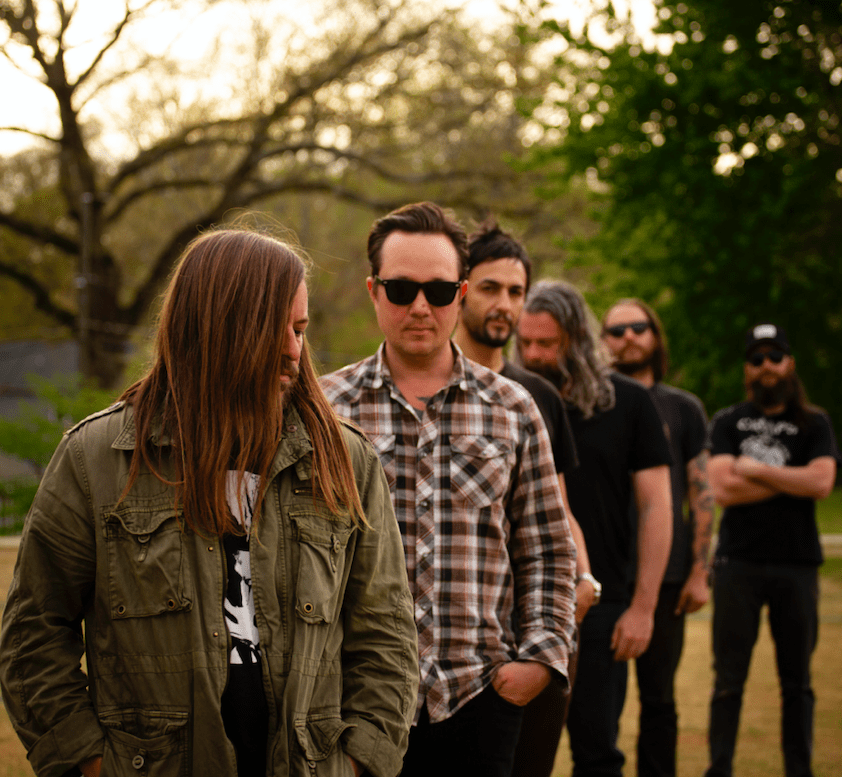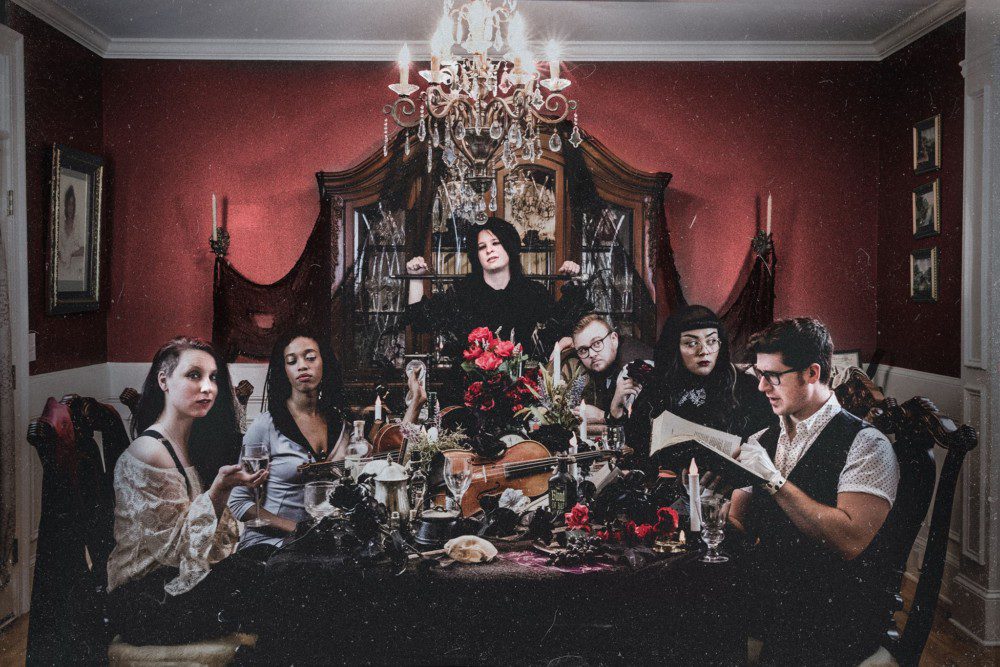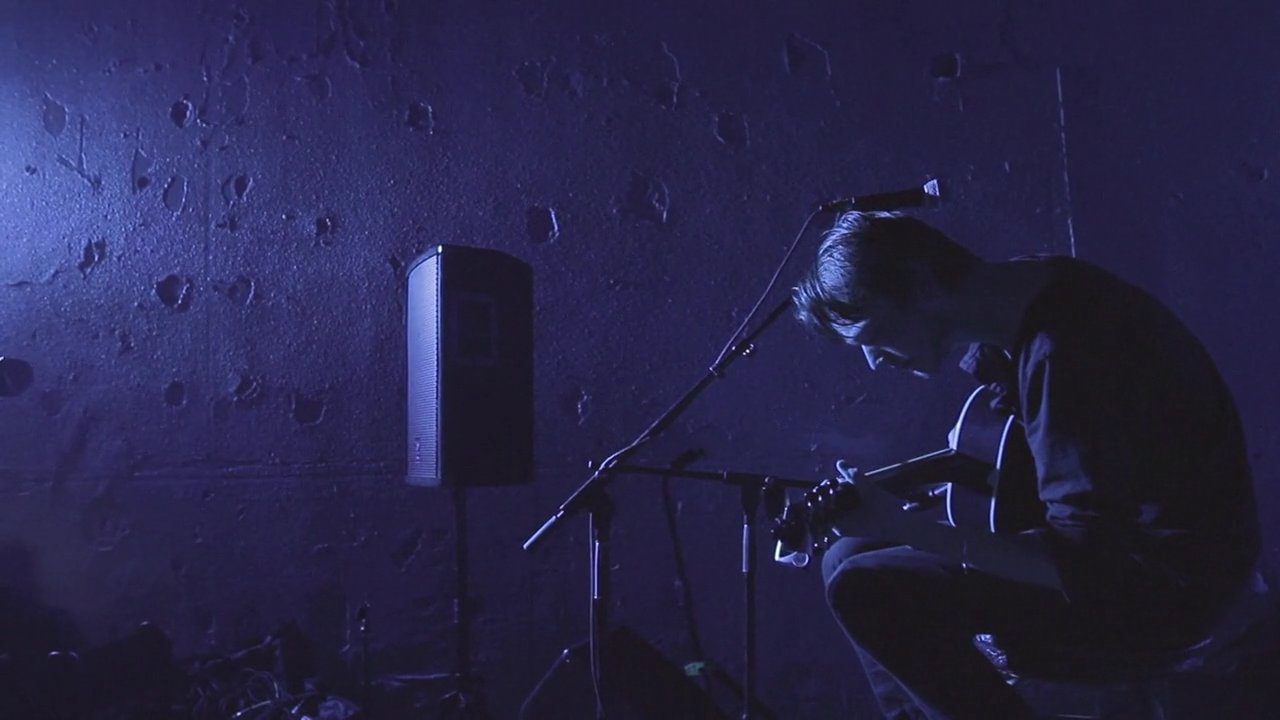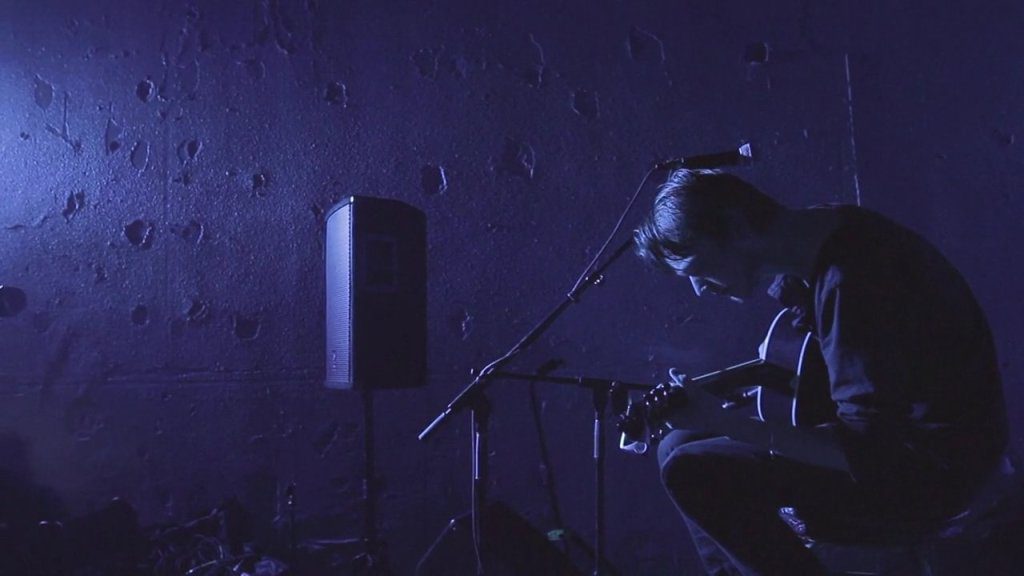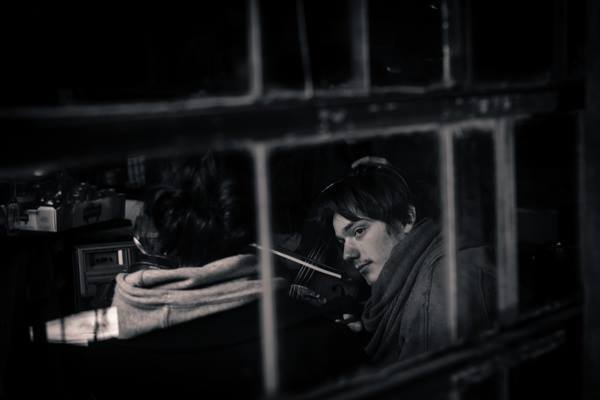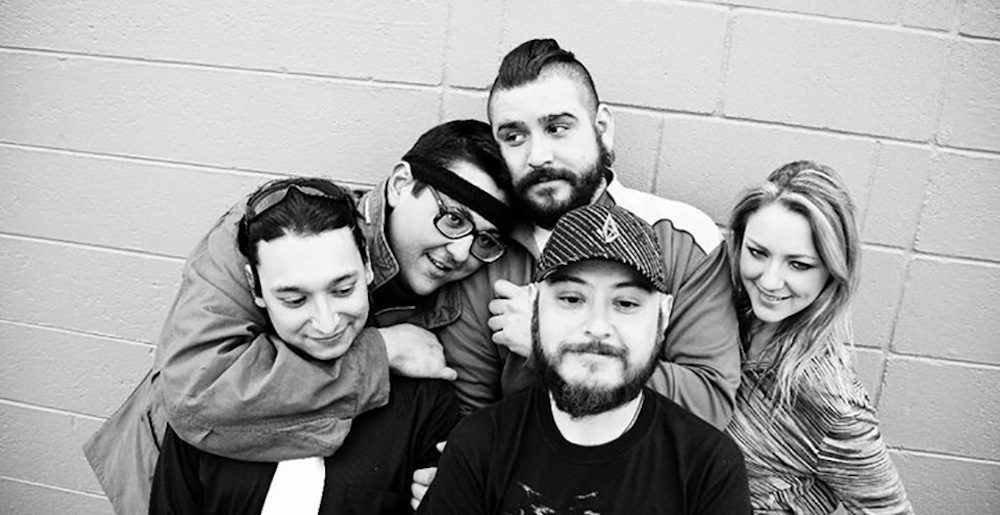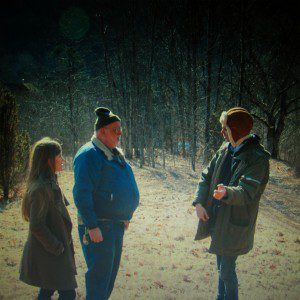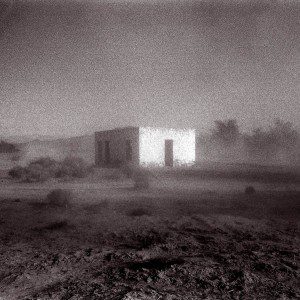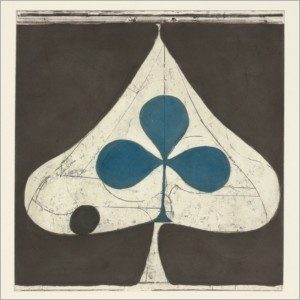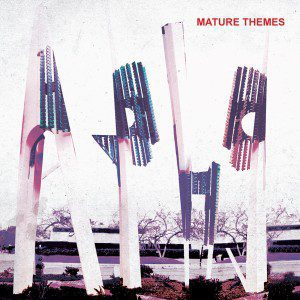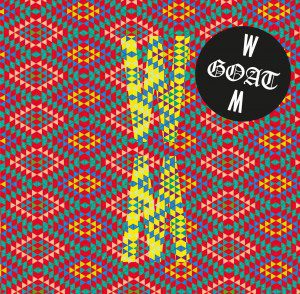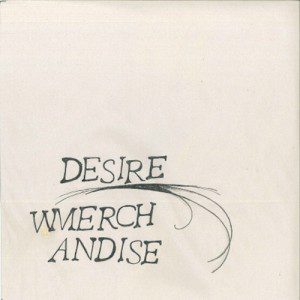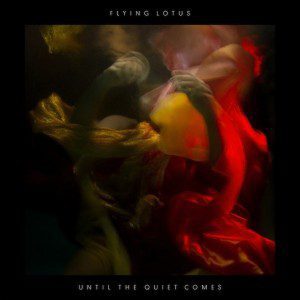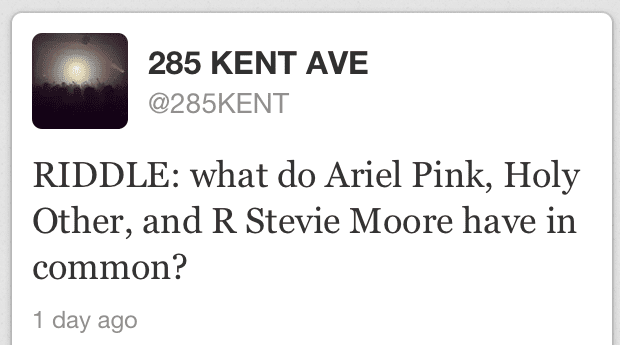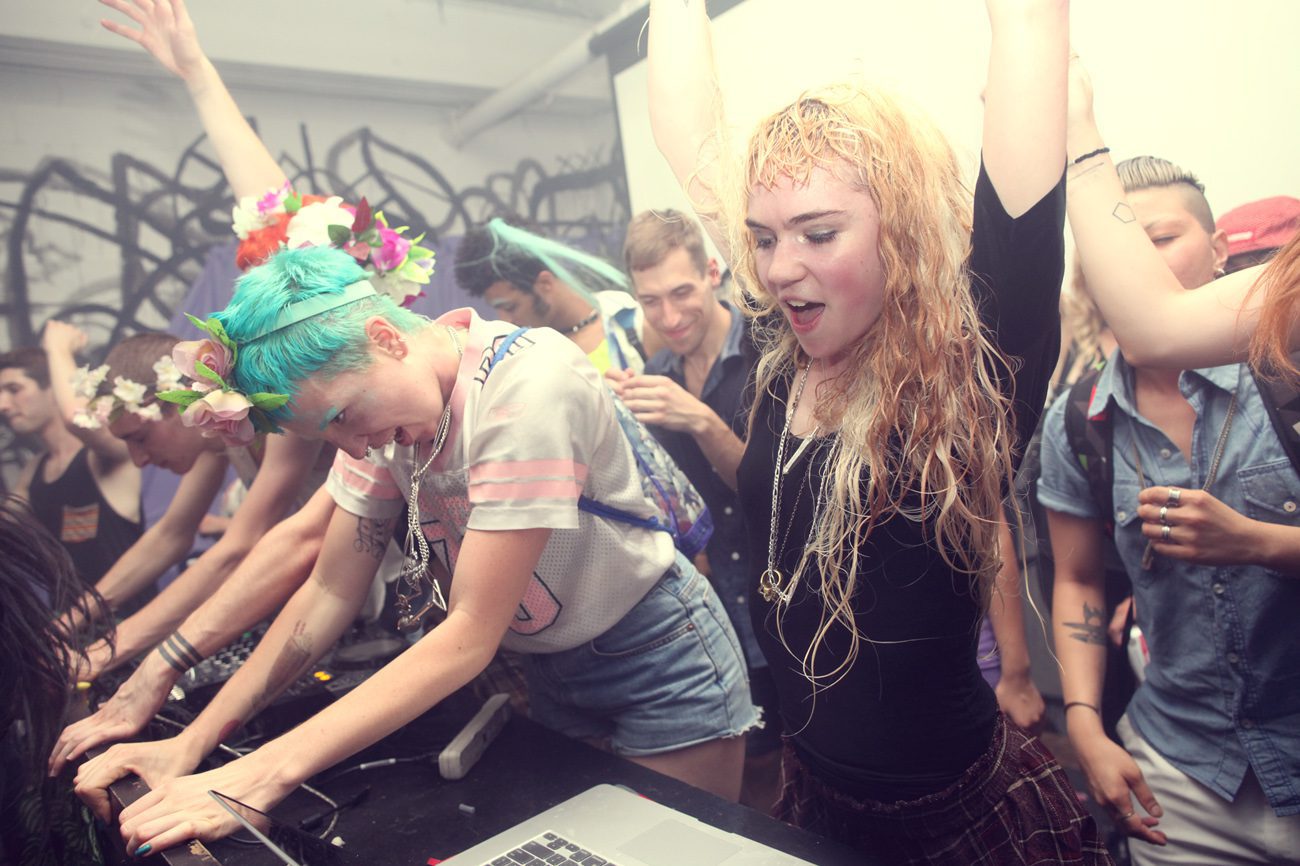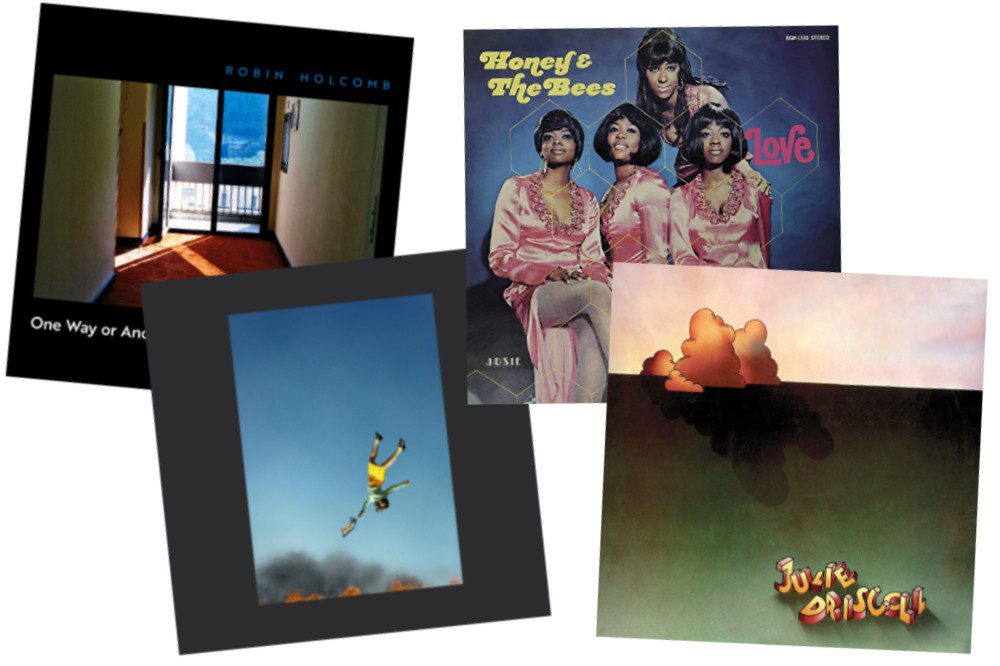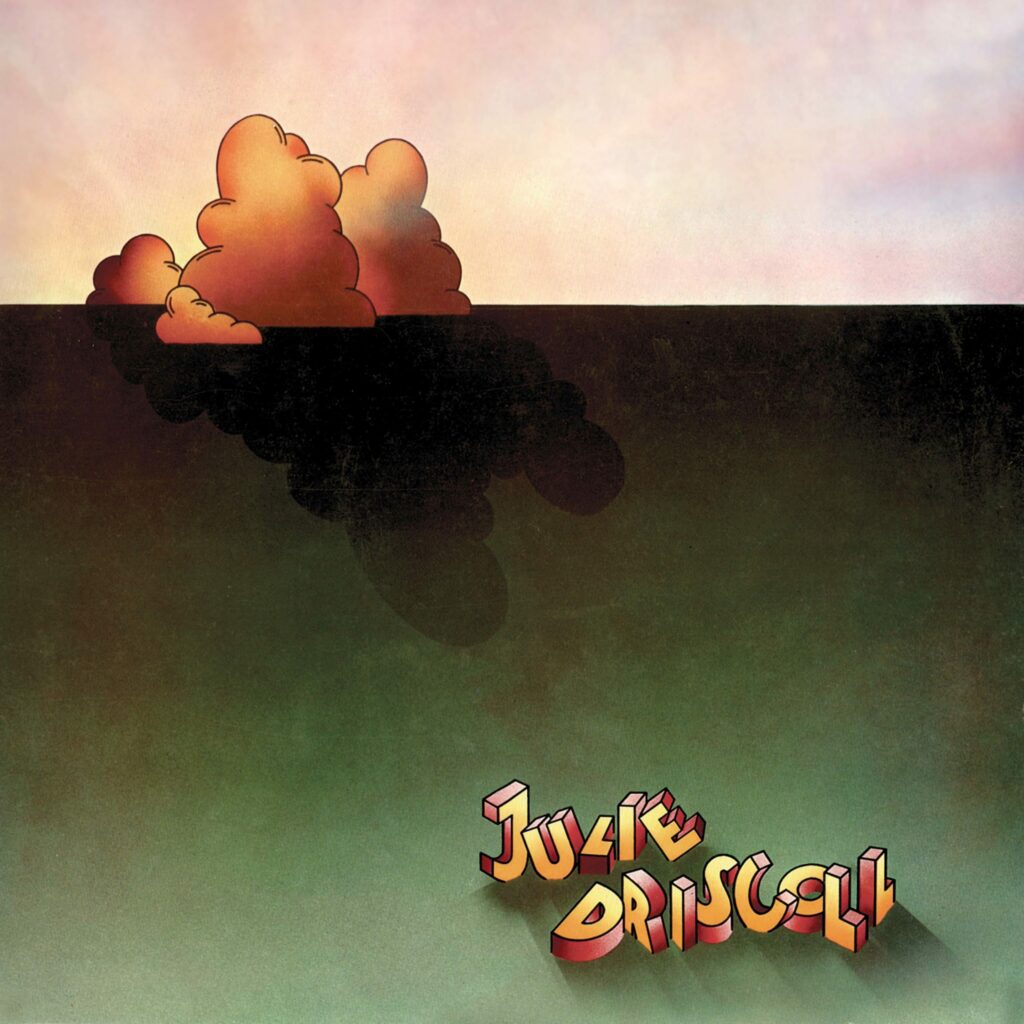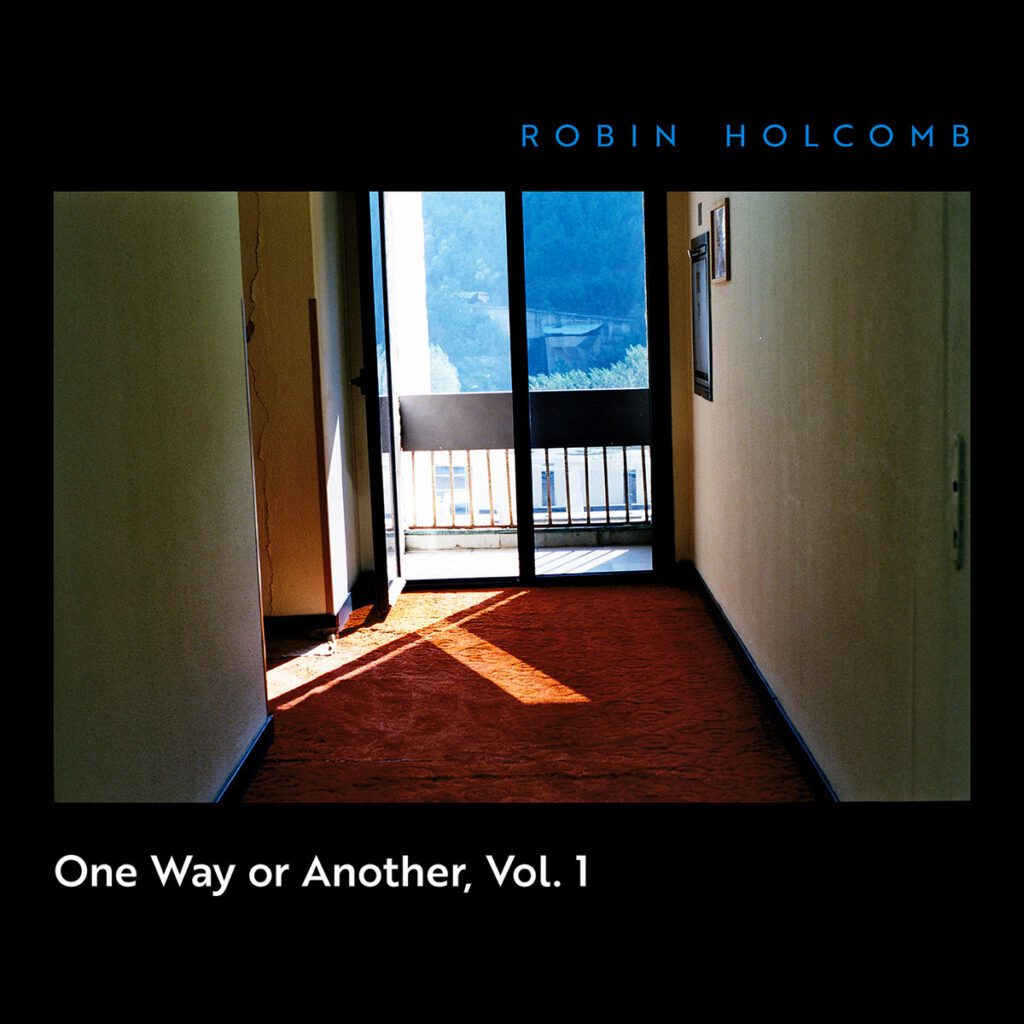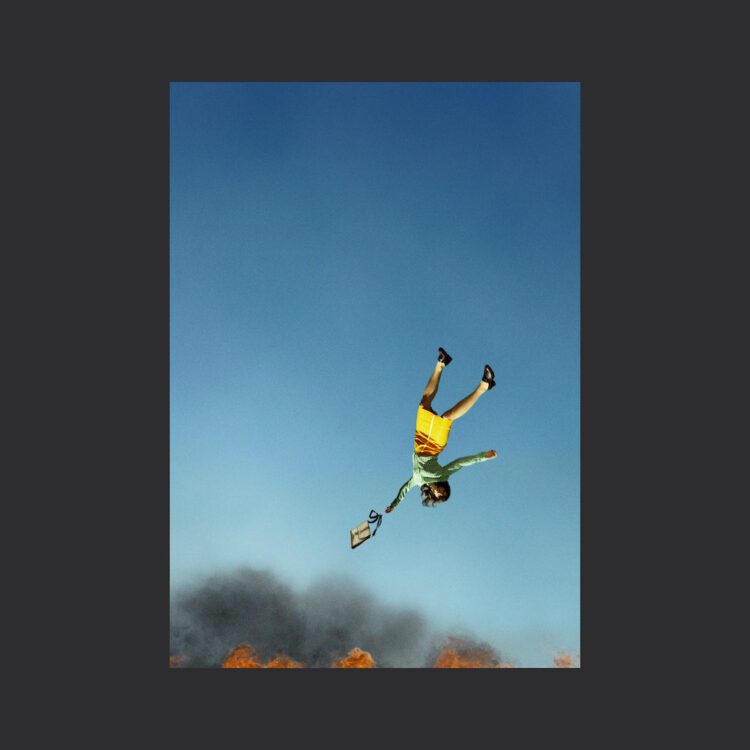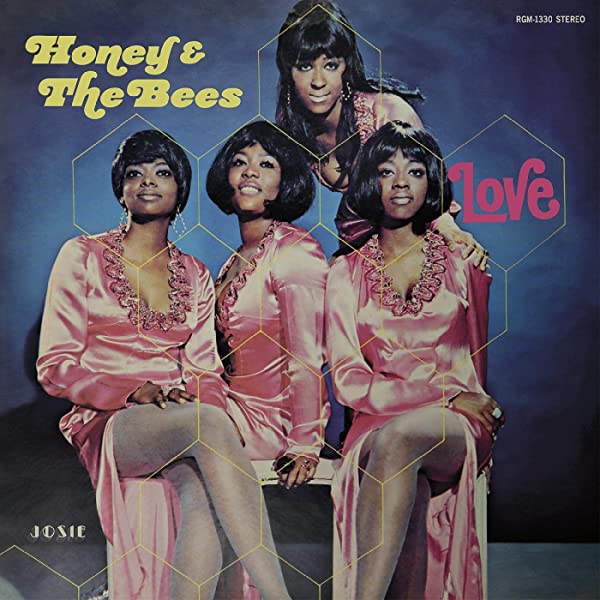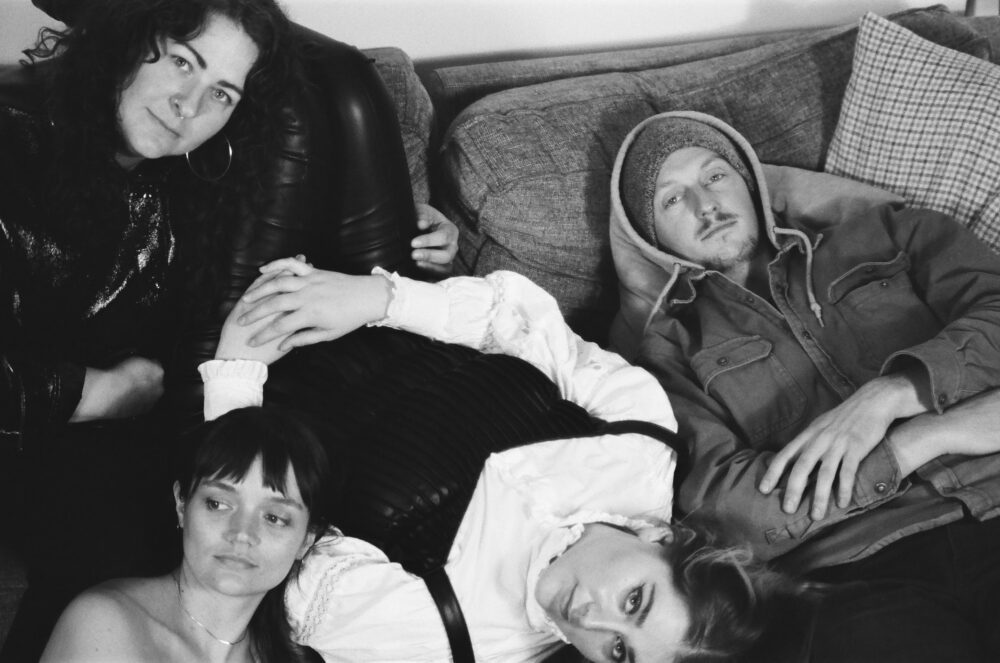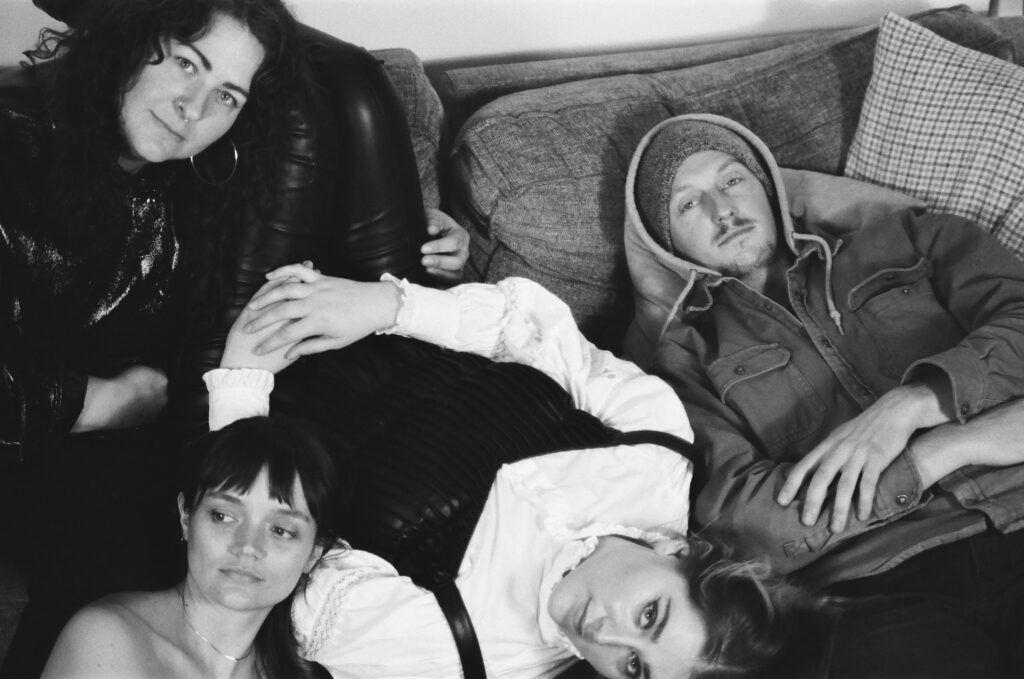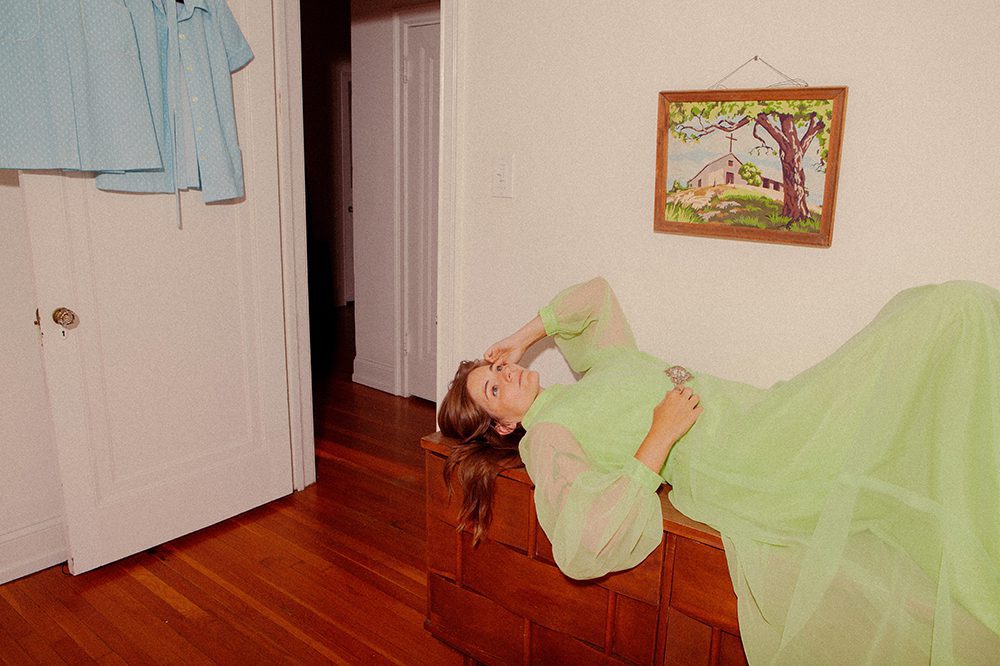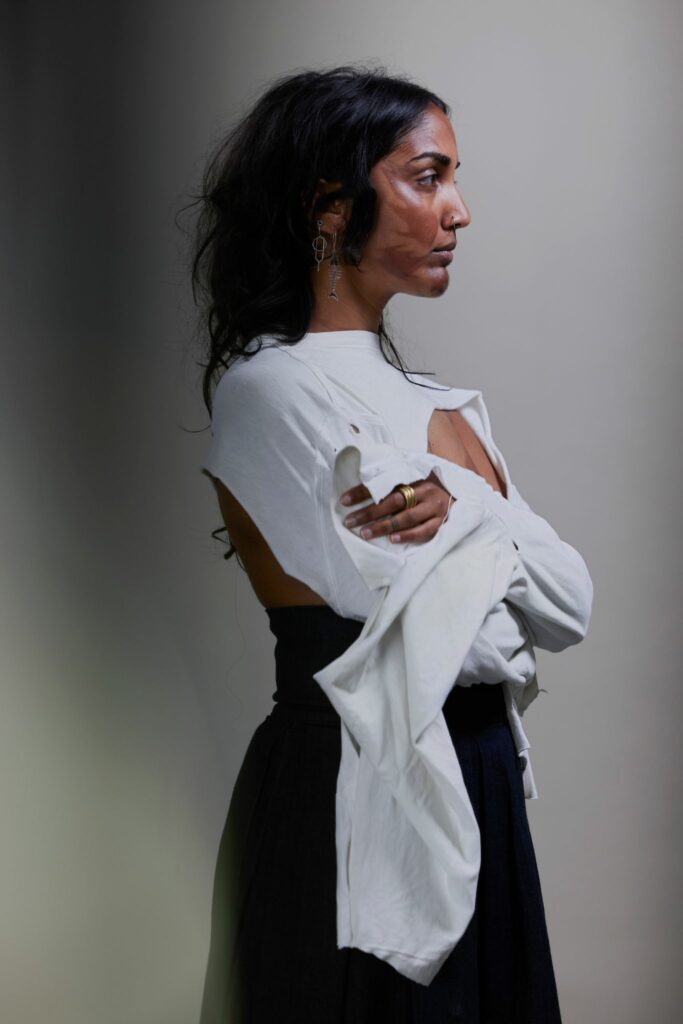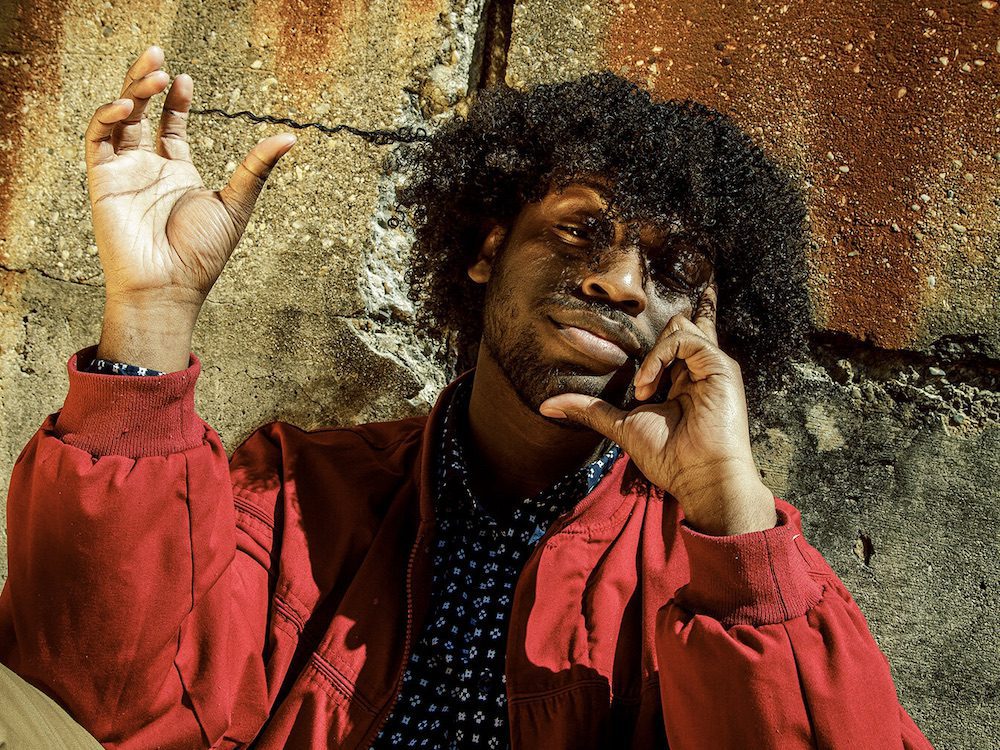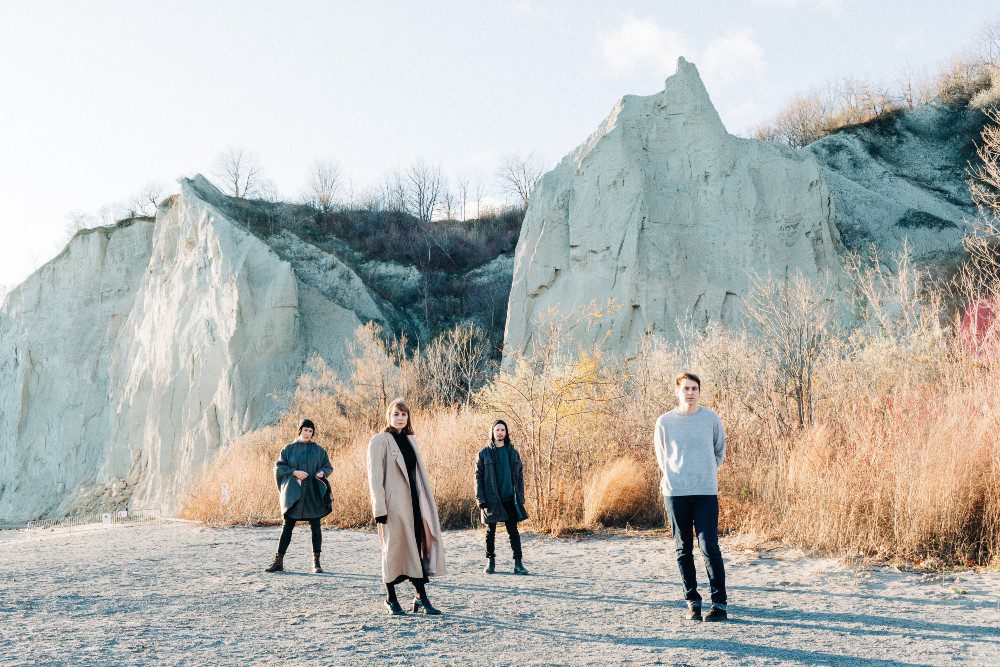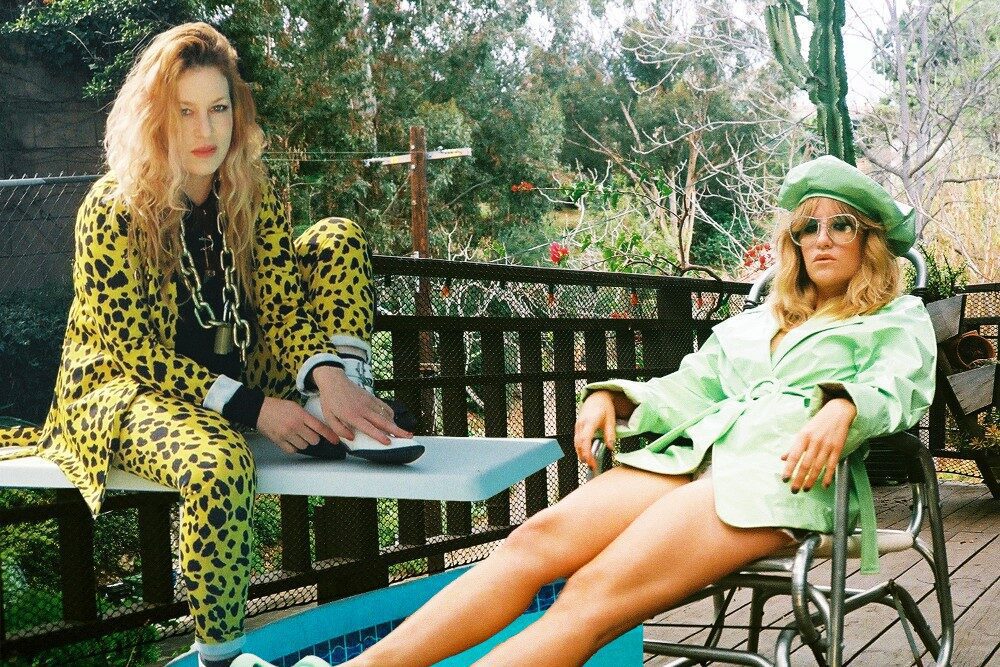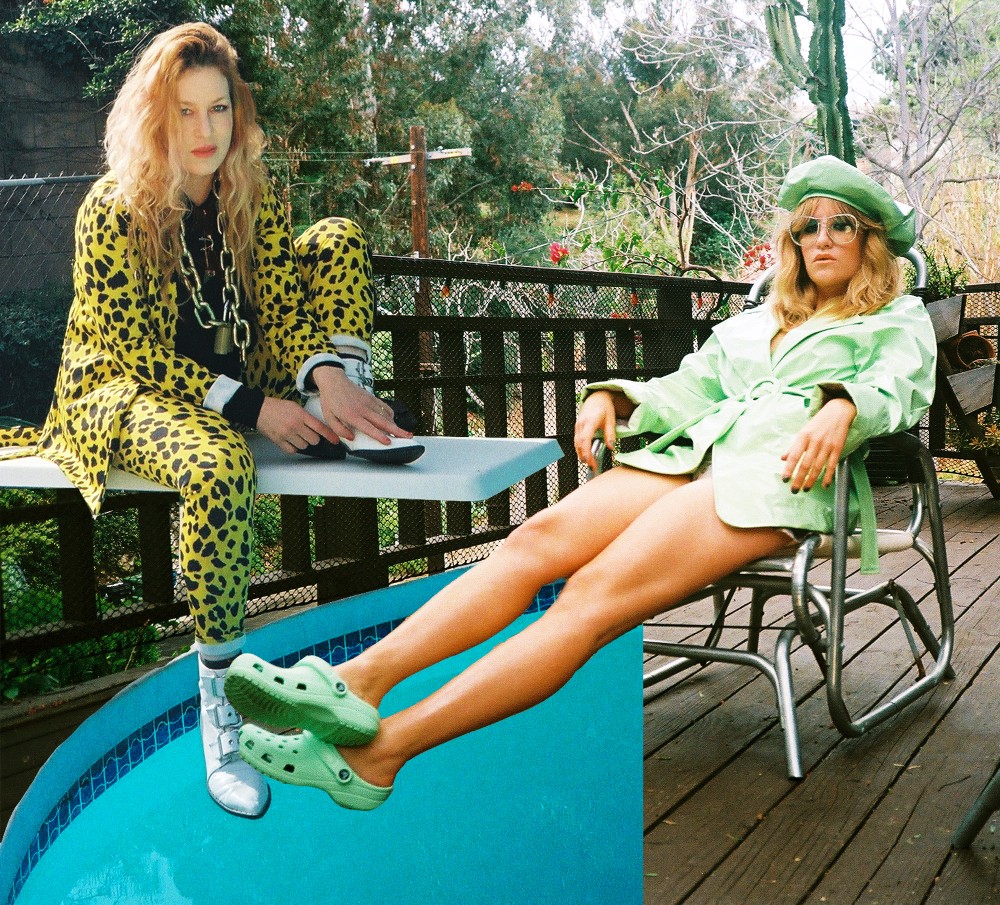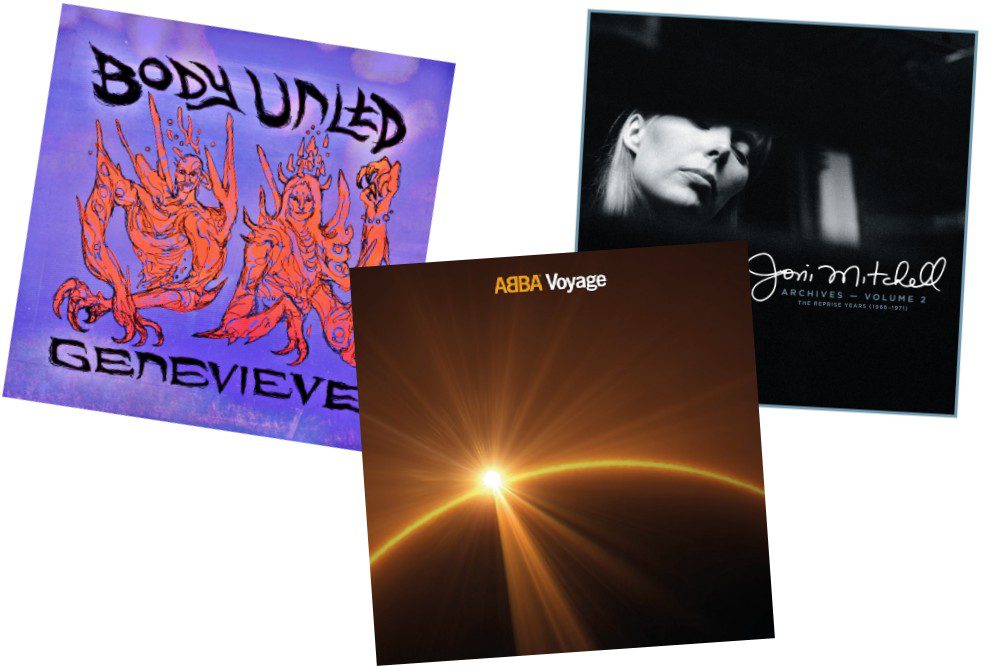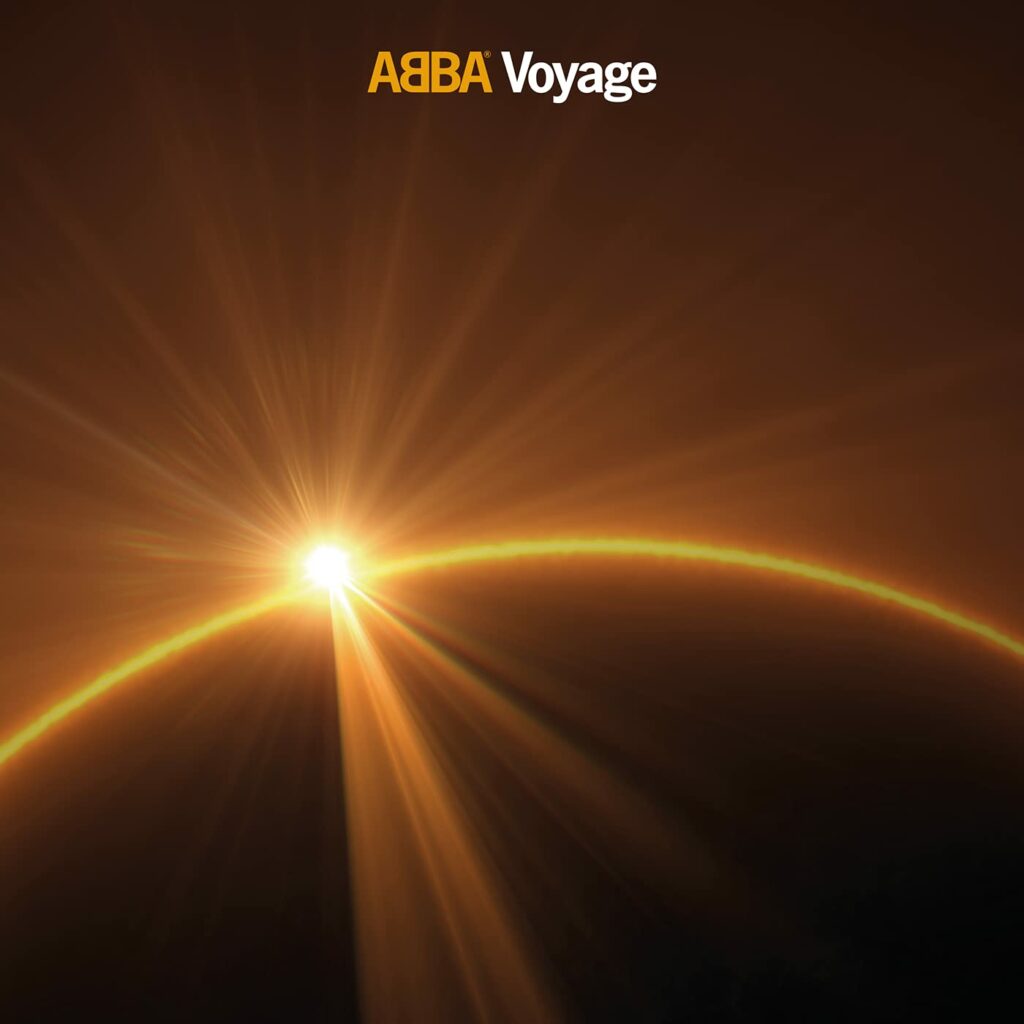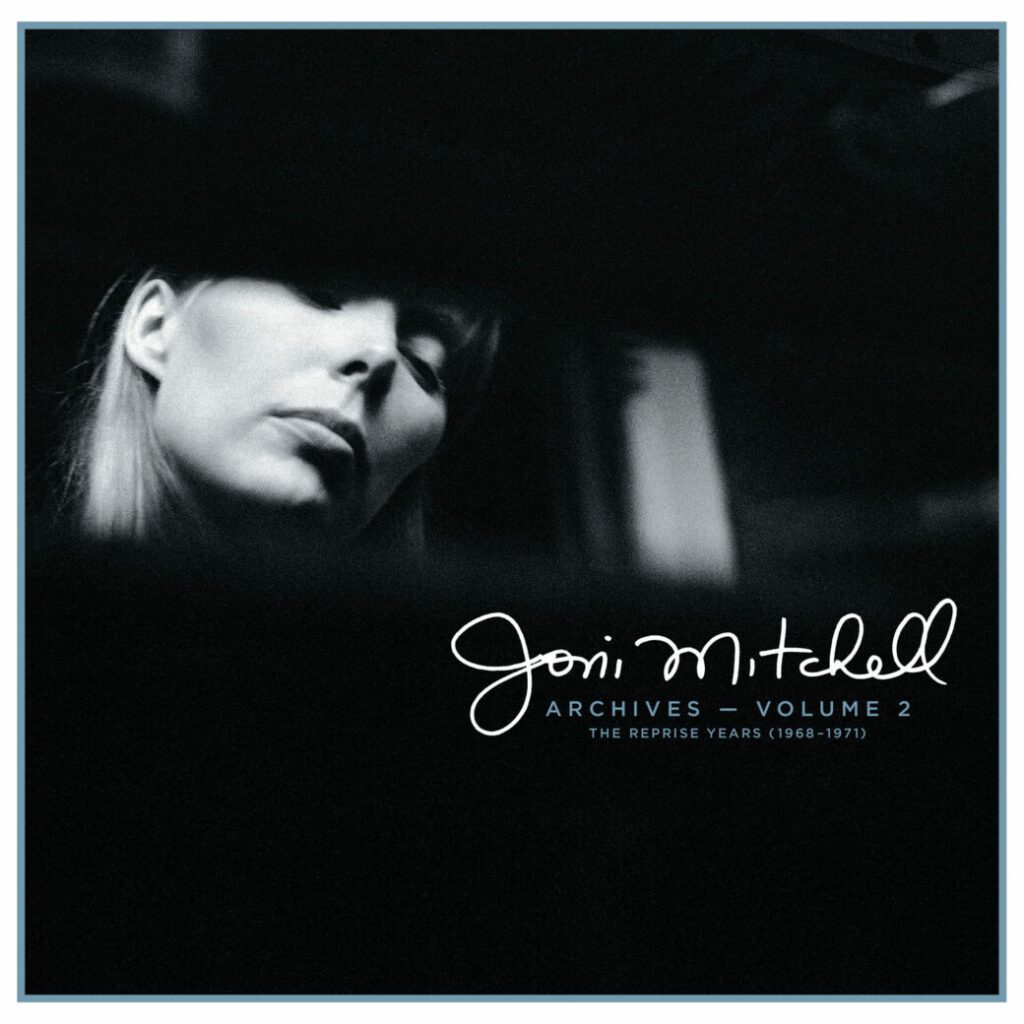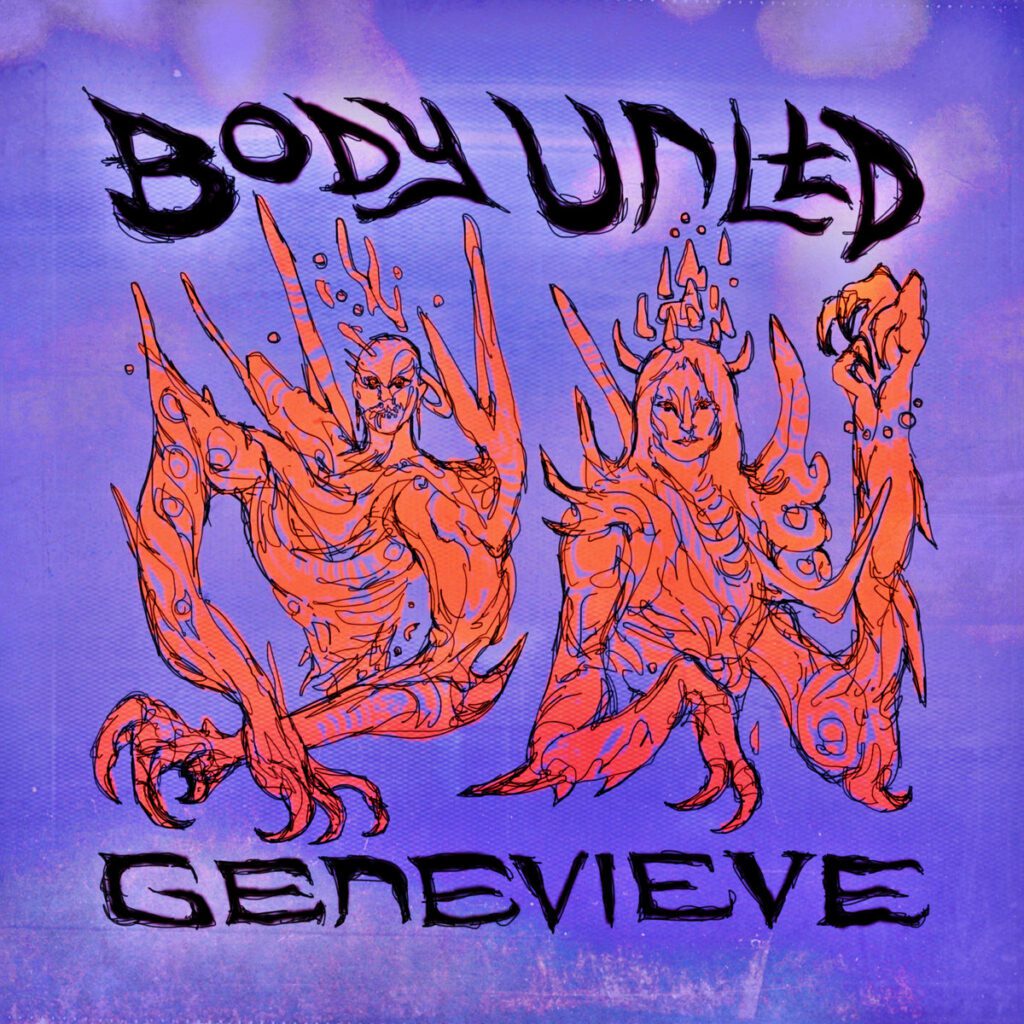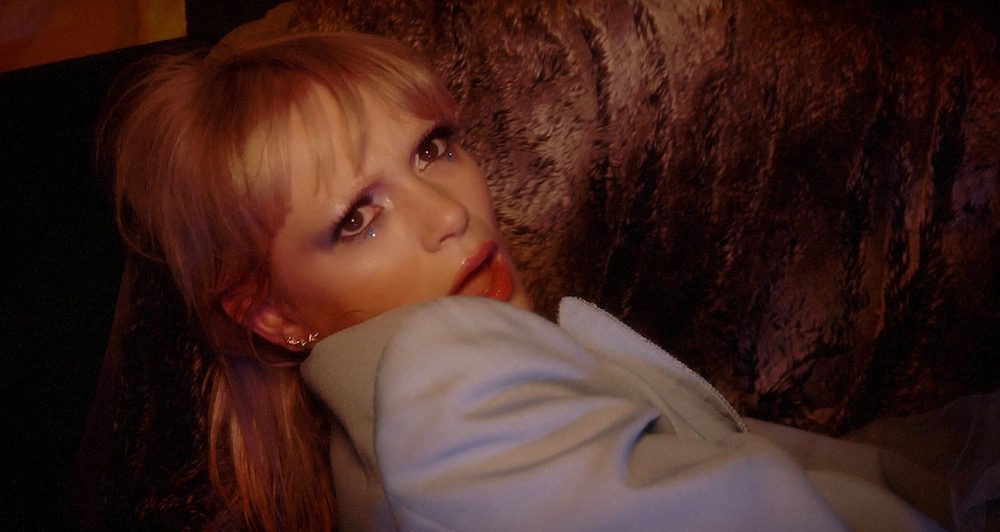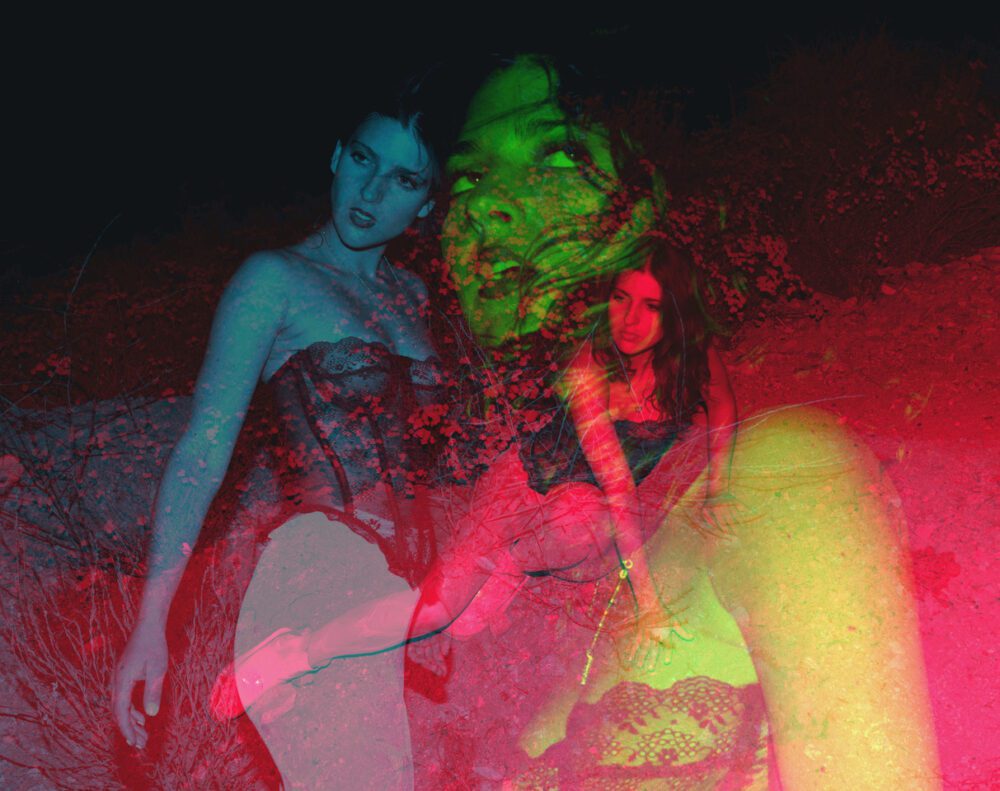
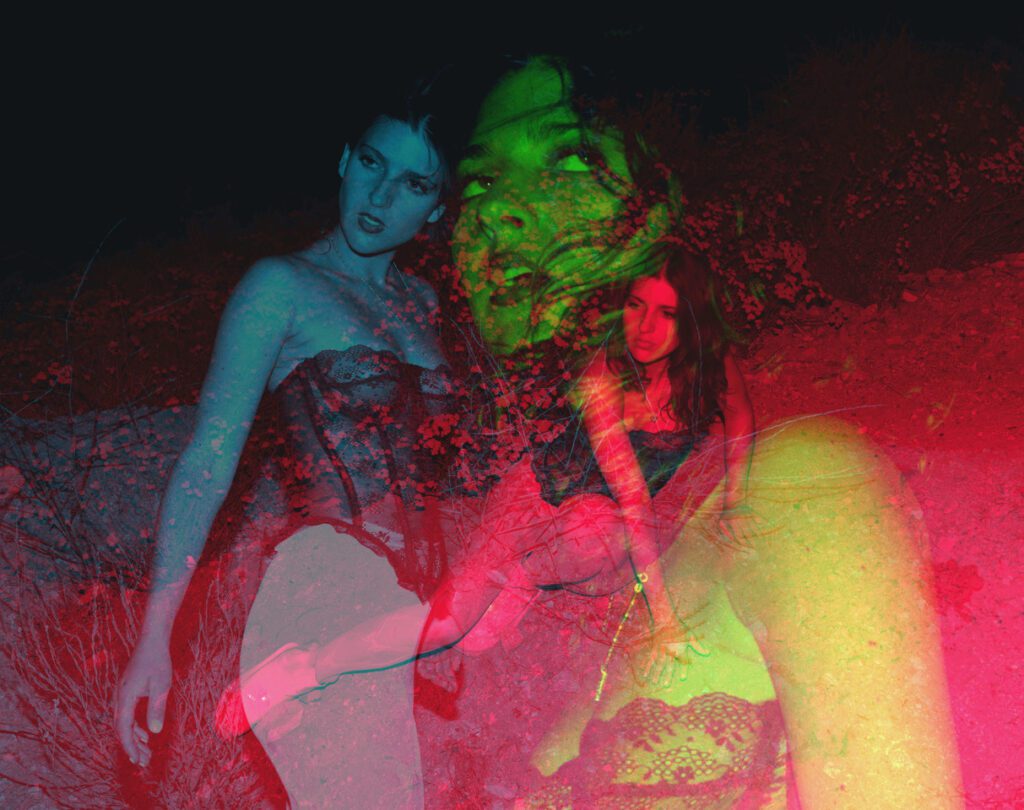
“I’m definitely the type of person who doesn’t really care what the medium [is] – if I’m feeling the need to express myself, I will do it with whatever’s around,” says Liz Nistico, and she’s more than proven herself a Renaissance woman with her newest project Revenge Wife. After eight years as one half of “brat pop” duo HOLYCHILD (alongside multi-instrumentalist Louie Diller), Nistico released a debut EP under her solo moniker this summer, Background Songs For Your Boring Life, Part I. It compiles four singles Nistico shared in the lead-up via a series of linked short films, as well as an additional track. A few weeks ago, she also shared “Die Together,” the lead single from Part II.
Revenge Wife is a fresh, modern and emotional project – at its root is Nistico’s ongoing self-interrogation of her fears surrounding intimacy and relationships, while on the surface, it makes good on hyperpop’s best tendencies to sonically hybridize high-dosage time-release Adderall with the early 2000s Hampster Dance Song thing that happened when people first started using the internet. Textural electronic jams meet with deep, raw sentiment that’s reflective, self-aware, empowering, vulnerable and captivating.
The videos add another complex layer to the Revenge Wife persona, establishing Nistico as both director of and actress in her own twisted visions. With a Lynchian aesthetic, the viewer has the ability to enter and inhabit the noir surrealist dream world of Revenge Wife. The shots have an ominous, out-of-context sensuality, teasing homage to “Criminal” era Fiona Apple.
Born and raised in New Hampshire by a pilot and a nurse, Nistico was encouraged as a child to study dance, musical theatre, and creative writing, all of which clearly inform her current work. Though she studied International Affairs in D.C., she began to feel her true calling was to make art, exploring filmmaking at first. When asked about visual reference points, she explains, “At this point, I don’t really make stuff with visual references. I mostly have a story, and use my own eye.”
Though they were released out of sync, (it’s just how it happened according to Nistico) and appear in a different order on Background Songs’ tracklist, the videos can (and should be) viewed sequentially, beginning with “Home.” “Home is about a long distance relationship, but from an anxious state,” Nistico says. “The music video was the start of the horror era for me.”
Shot about a year ago now, “Home” initiates the series with a dream sequence that sets Nistico’s character on the journey she continues with “Earthquake.” On YouTube, Nistico poses the question, “Have you ever had a dream that changed your life?” The song’s earnest lyrics (“you’re in all my dreams”) depict longing for someone who’s far away, but the video’s unsettling imagery hints at something much darker, which only deepens with “Earthquake.”
The tragic yet upbeat track boasts organic and thoughtful production, Nistico’s timeless lyrical storytelling sitting pretty with auto-tuned vocals over bright, fidgety synth. Nistico ponders whether her love interest would be there for her when disaster strikes, a prescient and somber reminder of the true colors we’ve seen from friends and lovers over the last chaotic year. In the video, Nistico looks like the aggressor her moniker suggests, while red-hued flashbacks scorch the wintry landscape she drives through, in disguise, toward an ambiguous end point.
“This music video is about trusting yourself and moving toward love, even when you’re haunted by past trauma,” Nistico describes on YouTube. “Our main character is trusting the unknown despite flashes of past trauma, and leaving her life behind.. for what?”
We see what she’s headed for when “Manifest” picks up the story. In some ways, perhaps, it’s the most violent of the series; John Karna plays Nistico’s maniacal lover, and the two are locked in a toxic battle for dominance over the other. Described as “a story of love that’s wrong for us, set to a song about a life that’s wrong for us,” “Manifest” grew out of Nistico’s response to living in LA, but it also became an edgy driving soundtrack perfect for my ongoing habit of errand hopping around Manhattan in rush hour traffic (woops).
Poking at the flawed concept of “manifesting” what we desire by obsessing over it, Nistico’s incisive lyrics expose the internal frustrations of new age toxic optimism. It’s actually surprising that there are few, if any, songs that tackle this topic in this way. “I’m working on me today/Same day as every day/I spend a lot of time trying to grow/But what do I see from it?/Ok, my body’s fit/Yet I’m always struggling/Got nothing to show,” Revenge Wife emotes with refreshingly cathartic and childlike urgency. “They say manifest (Fuck that)/They say to de-stress (Fuck that)/I don’t even know myself/How am I supposed to know what’s best?”
Nistico wants what we all want – a supportive partner, money, recognition – but the video lays bare just how damaging chasing a lifestyle can be, and it doesn’t end well for Nistico’s lover. Ironically, Nistico made these videos on a relatively small budget; they were shot using an iPhone in the midst of the pandemic. The one exception is the next video in the series, set to “Dream I Had,” which Nistico says is her favorite visual. There’s some carry-over in the imagery and editing style to aesthetically tie it to the other videos. Nistico incorporates more of her dance background into this fever dream of a clip, eventually reaching her own distorted form of enlightenment only to find herself trapped in it.
“‘Dream I Had’ is actually a conversation with my higher self, where all the verses are from her perspective,” Nistico says. Her inner wisdom waits patiently to guide her decisions, only to be pushed away by self-doubt – a battle of conscious empowerment so many of us wage internally. “The choruses, ‘I never see you,’ are from her perspective. She’s like, ‘I’m always outside of your window, you never open your window, you never ask for me, what the heck? I’m always here.’ And then the [response is], ‘You’re just a dream, you always get away from me.'”
The final installment of the video series hints at more to come, but it’s unclear which direction Revenge Wife will take as the project evolves. For now, Revenge Wife owes its richness to the four years Nistico has spent developing it. Those familiar with HOLYCHILD’s self-directed music videos and performance art pieces will remember Nistico’s unparalleled vision and confidence not only as front woman, but as the band’s creative director with a reel of visual masterpieces. But like many artists Nistico was dissatisfied working creatively in the confines of the music industry’s big machine. The oppressive withholding of releases, and the creeping tensions for musical autonomy led Nistico to commit her efforts full time to the new era of Revenge Wife. So HOLYCHILD went on “indefinite hiatus.”
Expressing with utmost professionalism an ongoing positive relationship with her former HOLYCHILD bandmate (who is currently releasing solo music under the moniker Louie Louie!), Nistico says they were thrown into the deep end, with little concern for maintaining flexibility or consistency within their release schedule. “I met Louis, my bandmate, and we moved to LA to launch HOLYCHILD. It all happened really fast. Within a year of moving to LA, we were signed and had every major record label trying to work with us,” she remembers. “It was pretty crazy, but I’m really grateful for that experience.”
After releasing debut The Shape of Brat Pop to Come in 2015, Nistico was at a turning point, brought on by ongoing surgeries over the course of six months for a cyst on her vocal cord. Scared that even talking could risk her recovery, she became a hermit, and delved into Tarot Card reading and existential and internal spiritual work and meditation.
“I had this crazy ayahuasca journey when I was at a crossroads in 2016. Should I continue with music? Should I just focus on directing?” Nistico says. “The next day I got a piano and then wrote all these songs. A lot of them made their way on to [2019] HOLYCHILD record The Theatrical Death of Julie Delicious. Those were my first songs writing alone.”
Leaning on her newfound mindfulness, she discovered herself in a new way and from this era of self-reflection and healing Revenge Wife was born, “out of the feeling of wanting to be empowered just doing things by myself,” Nistico says. “Especially the writing part of it – I feel like it’s such a masculine thing. Even though directing might be too, I feel like I mastered my confidence with that. I know it sounds weird, but I really believe that I was able to play piano in a past life. When I look at the piano, it just makes sense to me.”
Still, Revenge Wife is in many ways an extension of the interests Nistico has explored in previous projects, all the way up to her most recent single “Die Together.” “I actually made a short film called ‘Forever’ about the same concept. I was making a lot of art around the concept of murder-suicide for love, because you’re at this insane apex of love,” she explains.
The song was written over the course of a few years, she adds. “Later I felt like the chorus meant different things to me – like dying together when you’re really in love, because your ego is dead,” she says. “I’m really interested in the spiritual realm and death, and there’s the lyric ‘We’ll find out what else there is.’”
“The verses are more real, coming from a place of insecurity,” Nistico adds. “Do you want me/Am I pretty/Do you ever really even think about me?” she sings, as if these things are enough to pull someone to the edge of oblivion. Nistico wants to be the center of someone’s universe, and to have that someone prove it in the most final of ways, taking to extremes the desire so many of us have for approval and love. So too, does Revenge Wife as a whole take that yearning to extremes; by making her own desires so garish and out-sized, Nistico has a vehicle to examine them from an almost tongue-in-cheek view – and invites us to do the same.
To celebrate the song’s release, Revenge Wife plays a show this Saturday October 23rd at the Moroccan Lounge in Los Angeles. With plans to spend the next few months hibernating creatively in Italy, then potentially making a move to a slower-paced creative hub in the Catskill Mountains to satisfy her creative urge of being in nature, there’s no doubt Revenge Wife will continue to push creative boundaries.
Follow Revenge Wife on Twitter and Instagram for ongoing updates.


